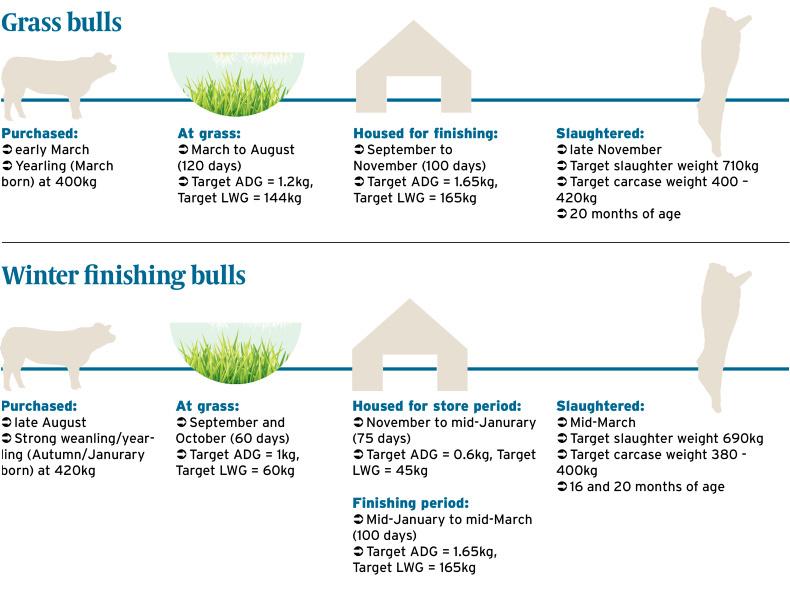For any farmer with 20 cows, bringing 20 calves to the mart each year, the most he can make in a year is around €20,000. Taking feed and all the other expenses off, it’s impossible for anyone to make a living off of that.” This sentiment expressed by Tommy Holmes is shared on many smaller scale suckler farms throughout the country. Allowing for the fact that many small-scale dry stock farms are now only run on a part-time basis, and off-farm earnings make up the majority of family incomes, it is still a massive challenge for these enterprises to generate enough income to make it a worthwhile exercise and prevent it from existing as little more than a hobby.

Two challenges
Tommy Holmes is the Mayo participant in the Teagasc/Irish Farmers Journal BETTER farm beef challenge and he is one of the many farmers faced with the aforementioned challenge. Similar to many farms in the west of Ireland, his farm on the outskirts of Ballina, is heavily fragmented; an 18ha home block is situated on both sides of a road, while two blocks of rented land are located five to 10 miles away. Given the fragmented nature of the farm, Tommy is reluctant to cross the 20 to 25 mark with the number suckler cows he runs on the farm meaning generating output is a significant challenge.
On a positive note, the land type in the area is excellent, with rich fertile soils and good drainage properties allowing for high annual growth figures and long grazing seasons. This is only an advantage if it is utilised fully; something that Tommy is excelling at.
Prior to entering the BETTER farm beef challenge, Tommy was already ahead of the game in terms of grass growth, measuring on a weekly basis and constantly improving the asset through reseeding and building soil fertility. Last year, 13.1t DM/ha was grown on the farm but more impressively Tommy says “I’d say I have definitely grown as much as last year if not more this year.”

Growing grass is all well and good, but, unless you are selling fodder, a product that there is only demand for maybe one in every five years, there isn’t a way of making money from it unless it can be turned into cheap weight gain for livestock. And with that, challenge number two is identified.
So, two challenges exist: generating enough output from a small scale farm to increase gross margin and utilising the high volumes of grass grown to turn into extra income. The solution Tommy has implemented, is a clever bull beef operation.
The cycle
A bull beef finishing system has been introduced on the farm to primarily increase the gross output on the farm, which can subsequently increase gross margin, but it has also been designed to take full advantage of the farm’s ability to grow high volumes of grass each year.
The finishing system operates in a cycle, with two main groups of bulls passing through the farm each year – a winter finishing system which involves purchasing weanlings and yearlings during the autumn and finishing these cattle under both 16 and 20 months of age in March and April and another batch of yearling bulls is purchased in March for the grass and subsequently finished out of the shed in November and December at 20 months of age.
Tommy’s 10 to 15 own bulls, born in autumn, also fit in with this group for slaughter at 16 months of age.
While the system might sound complex and the mix of under 16-month and under 20-month bulls may be undesirable in beef markets, this system undoubtedly meets the two challenges faced on the farm. Both groups of bulls graze 25ac of rented ground for a combined 240 days; 50 bulls from March to August before being housed for finishing, and a further batch of recently purchased bulls graze for September and October before housing – this is an extremely high utilisation of a cheap feed source and in-turn, cheap weight gain.
More significantly, however, is that Tommy is increasing his farm gate output. The target on the farm is to put 100-head of bulls through the system annually. One might say that is a good boost in output for a 20-cow herd.
Adviser comment
John Greaney
Running a large number of bulls at grass is no easy task but Tommy has a good system in place. Moving them daily and keeping fresh grass under their heads is key. The farm is stocked at over 3lu/ha and the output is one of the highest in the programme. Growing over 15t DM/ha each year, Tommy has consistently proven how good he is at managing grass.
Having built up a good relationship with the processors, Tommy is slaughtering bulls at good times of the year when trade is up before Christmas and again in late spring. It will be interesting to see the margin the bulls will leave this year as meal prices have crept up again. Thankfully, the animals have done well at grass all summer and have came into the shed over 550kg






 This is a subscriber-only article
This is a subscriber-only article










SHARING OPTIONS: